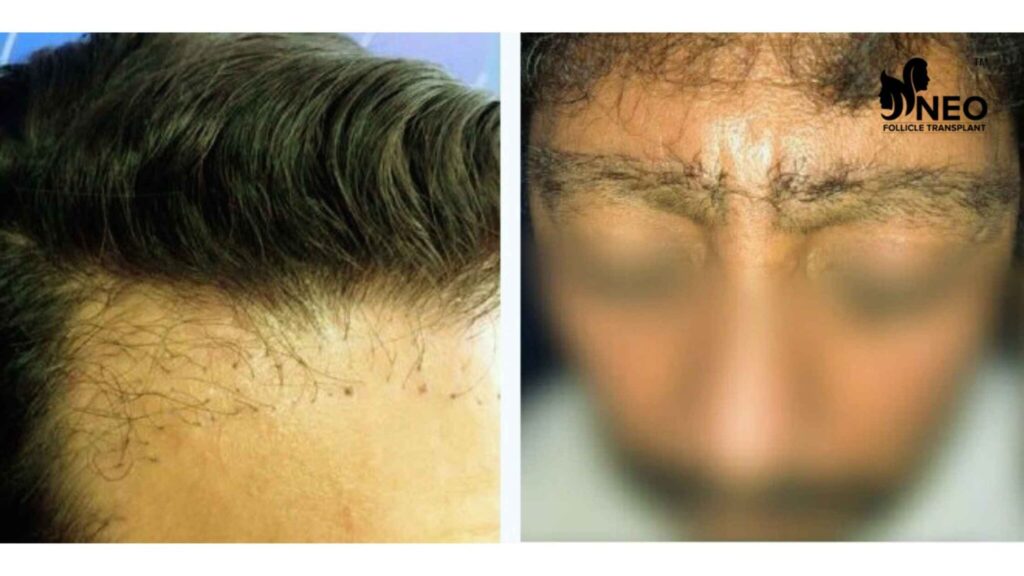
A hair transplant can be a life-changing procedure, restoring confidence and self-esteem. However, not all hair transplants are successful. Many people experience failed hair transplants due to various reasons, leading to disappointing results. In this article, we will discuss the causes of failed hair transplants and solutions to fix them
What Causes a Hair Transplant to Fail?
A hair transplant can fail due to several factors, including poor surgical technique, inadequate post-operative care, or underlying medical conditions. If the surgeon improperly extracts or implants grafts, they may not survive, leading to poor growth or an unnatural appearance. Infections, excessive bleeding, or improper handling of grafts can also cause failure. Patients who smoke, have poor circulation, or suffer from conditions like diabetes may experience reduced healing and graft survival. Ignoring post-operative instructions, such as avoiding strenuous activities or not following prescribed medications, can also lead to complications. Choosing an experienced surgeon and following proper aftercare are essential for success.
- Poor Surgical Technique If a surgeon lacks experience, the transplant may not be performed correctly. Mistakes like poor graft placement, improper extraction, or damaging hair follicles can lead to failure.
- Infection After Surgery Infections can damage hair follicles and prevent them from growing. Without proper hygiene and post-operative care, bacteria can enter the scalp and cause complications.
- Insufficient Donor Hair A successful transplant depends on a good supply of donor hair. If there is not enough healthy donor hair, the results may be thin and unnatural-looking.
- Unrealistic Expectations Some patients expect too much from a hair transplant. If the hair loss is too advanced, a single procedure may not provide full coverage.
- Improper Post-Operative Care Not following the doctor’s aftercare instructions can result in poor healing and graft failure. Activities like touching the scalp, washing too soon, or engaging in strenuous exercise can affect the results.
- Medical Conditions Affecting Hair Growth Certain medical conditions like alopecia areata, thyroid disorders, or scalp infections can interfere with hair growth and lead to failed transplants.
How to Fix a Failed Hair Transplant
A failed hair transplant can be distressing, but there are ways to fix it. First, consult an experienced surgeon to assess the damage and determine the best corrective procedure. Options include a second transplant using advanced techniques like FUE (Follicular Unit Extraction) or FUT (Follicular Unit Transplantation) to improve density and natural appearance. Scalp micropigmentation can create an illusion of fuller hair for those with limited donor areas. Proper aftercare, including medications like minoxidil or PRP therapy, can enhance results. Choosing a skilled specialist and following post-surgery guidelines are crucial to achieving a more successful, natural-looking hair restoration.
- Undergoing a Corrective Hair Transplant If the first procedure did not yield good results, a second hair transplant may be necessary. A skilled surgeon can fix unnatural hairlines, fill in gaps, and improve overall density.
- Scalp Micropigmentation (SMP) Scalp micropigmentation is a non-surgical solution that creates the appearance of thicker hair by tattooing small dots on the scalp. It is ideal for those who do not have enough donor hair for another transplant.
- Platelet-Rich Plasma (PRP) Therapy PRP therapy involves injecting platelets from your own blood into the scalp to stimulate hair growth. This treatment can enhance hair density and improve healing after a failed Hair transplant.
- Using Hair Growth Medications Medications like minoxidil (Rogaine) and finasteride (Propecia) can help strengthen existing hair and promote regrowth, improving the overall look of a failed transplant.
- Hairpieces and Wigs If further procedures are not an option, using a high-quality wig or hairpiece can provide an immediate solution for hair loss concerns.
How to Prevent a Failed Hair Transplant?
Preventing a Failed Hair Transplant requires proper planning, a skilled surgeon, and diligent aftercare. Choose an experienced and reputable hair transplant specialist who uses advanced techniques like FUE or FUT for better results. Follow all pre- and post-operative instructions, including avoiding smoking, alcohol, and strenuous activities that can hinder healing. Keep the scalp clean and moisturized while avoiding direct sunlight and excessive touching. Medications like minoxidil or PRP therapy can support hair growth. Maintain a healthy diet rich in vitamins and proteins to promote recovery. Regular follow-ups with your surgeon ensure early detection of any complications for better results.
- Choose an Experienced Surgeon Selecting a skilled and reputable surgeon is the most important factor for a successful transplant. Research reviews, check before-and-after photos, and consult with professionals before deciding.
- Follow Aftercare Instructions Carefully Post-operative care is crucial for healing. Avoid touching your scalp, keep it clean, and follow all doctor’s recommendations to promote healthy hair growth.
- Maintain a Healthy Lifestyle Eating a balanced diet, staying hydrated, and avoiding smoking and alcohol can help with proper healing and better transplant results.
- Avoid Strenuous Activities Excessive sweating and physical activities should be avoided for at least two weeks after surgery to prevent infections and ensure graft survival.
- Monitor for Signs of Infection Watch for symptoms like redness, swelling, pain, or pus. If you notice any signs of infection, contact your doctor immediately.
Conclusion
A failed hair transplant can be frustrating, but there are solutions to fix the problem. By understanding the causes and taking necessary precautions, you can improve the chances of a successful procedure. If you experience a failed transplant, consult a specialist to explore corrective options and restore your hair with confidence.

5 thoughts on ““Failed Hair Transplants: Common Causes and Effective Solutions””